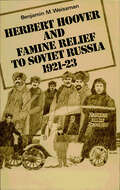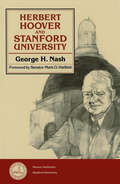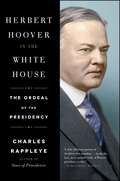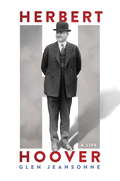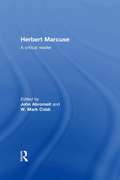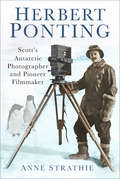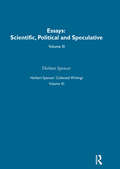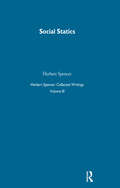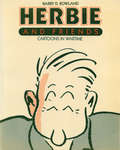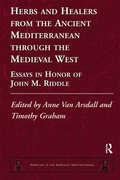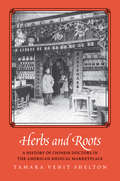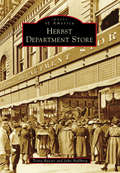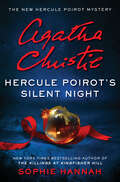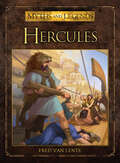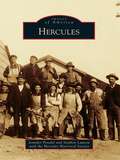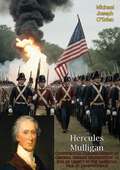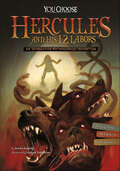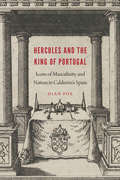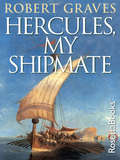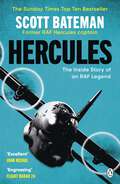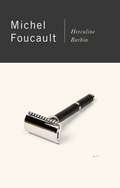- Table View
- List View
Herbert Hoover and Famine Relief to Soviet Russia, 1921–1923
by Benjamin M. WeissmanIn 1921 one of the most devastating famines in history threatened the lives of millions of Russians as well as the continuance of Soviet rule. Responding to a plea for help from the Soviet government, the American Relief Administration (ARA) agreed to provide famine relief in the stricken areas. The ARA was a private relief organization headed by Herbert Hoover, then U.S. secretary of commerce and one of the best-known Americans of his time for his spectacular success in rescuing the population of Belgium from starvation during World War I and in feeding millions of Europeans during the Armistice. Hoover was also a retired capitalist of considerable wealth, a champion of Republican liberalism, and a leading opponent of recognition of Soviet Russia. Lenin—head of the Soviet government, leader of the Bolshevik party, and living symbol of world revolution—was the antithesis of the ARA's chief. This book studies the personalities, motives, and modi operandi of these two celebrated figures, both as individuals and as representatives of their societies. At the same time it considers the relief mission itself, which has been the subject of continuing controversy for fifty years. Its partisans see it as a charitable, nonpolitical enterprise, while its enemies judge it an anti-Soviet intervention entirely devoid of humanitarian purpose. Herbert Hoover and Famine Relief for Soviet Russia is the first major attempt by an American scholar to reexamine the ARA mission, on the basis of much material made available since the ARA's 1927 official history. What emerges is, on the one hand, a painstaking examination of the historical details of ARA's mission and, on the other hand, a philosophic essay relating the ARA to broader questions of U.S.-Soviet relations the ideological antitheses of Hoover and Lenin. The author concludes that both sides overcame their ideological antagonisms and made possible a spectacularly successful relief mission that inspired the vain hope that a new era in Soviet-American relations had begun.
Herbert Hoover and Stanford University
by George H. NashGeorge Nash's research reveals the enduring ties that bound Hoover to Stanford University.
Herbert Hoover in the White House: The Ordeal of the Presidency
by Charles Rappleye"A deft, filled-out portrait of the thirty-first president...by far the best, most readable study of Hoover's presidency to date." --Publishers Weekly Rappleye's surprising portrait of a Depression-era president Herbert Hoover reveals a very different figure than the usual Hoover, engaged and active but loathe to experiment and conscious of his inability to convey hope to the country.Herbert Clark Hoover was the thirty-first President of the United States. He served one term, from 1929 to 1933. Often considered placid, passive, unsympathetic, and even paralyzed by national events, Hoover faced an uphill battle in the face of the Great Depression. Many historians dismiss him as merely ineffective. But in Herbert Hoover in the White House, Charles Rappleye draws on rare and intimate sources--memoirs and diaries and thousands of documents kept by members of his cabinet and close advisors--to reveal a very different figure than the one often portrayed. The real Hoover, argues Rappleye, just lacked the tools of leadership. The Hoover presented here will come as a surprise to both his longtime defenders and his many critics. In public Hoover was shy and retiring, but in private he is revealed as a man of passion and sometimes of fury, a man who intrigued against his enemies while fulminating over plots against him. Rappleye describes him as more sophisticated and more active in economic policy than is often acknowledged. We see Hoover watching a sunny (and he thought ignorant) FDR on the horizon. FDR did not "cure" the depression, but he experimented with steps that relieved it. Most importantly he broke the mood of doom almost immediately. The Hoover we see here--bright, well meaning, energetic--lacked the single critical element to succeed as president. He had a first-class mind and a second-class temperament. Herbert Hoover in the White House is an object lesson in the most, perhaps only, talent needed to be a successful president--the temperament of leadership.
Herbert Hoover: A Life
by Glen JeansonnePrizewinning historian Glen Jeansonne delves into the life of our most misunderstood president, offering up a surprising new portrait of Herbert Hoover—dismissing previous assumptions and revealing a political Progressive in the mold of Theodore Roosevelt, and the most resourceful American since Benjamin Franklin. <P><P> Orphaned at an early age and raised with strict Quaker values, Hoover earned his way through Stanford University. His hardworking ethic drove him to a successful career as an engineer and multinational businessman. After the Great War, he led a humanitarian effort that fed millions of Europeans left destitute, arguably saving more lives than any man in history. As commerce secretary under President Coolidge, Hoover helped modernize and galvanize American industry, and orchestrated the rehabilitation of the Mississippi Valley after the Great Flood of 1927. <P> As president, Herbert Hoover became the first chief executive to harness federal power to combat a crippling global recession. Though Hoover is often remembered as a “do-nothing” president, Jeansonne convincingly portrays a steadfast leader who challenged congress on an array of legislation that laid the groundwork for the New Deal. In addition, Hoover reformed America’s prisons, improved worker safety, and fought for better health and welfare for children. Unfairly attacked by Franklin D. Roosevelt and blamed for the Depression, Hoover was swept out of office in a landslide. Yet as FDR’s government grew into a bureaucratic behemoth, Hoover became the moral voice of the GOP and a champion of Republican principles—a legacy re-ignited by Ronald Reagan and which still endures today.<P> A compelling and rich examination of his character, accomplishments and failings, this is the magnificent biography of Herbert Hoover we have long waited for.
Herbert Marcuse as Social Justice Educator: A Critical Introduction (Critical Interventions)
by Charles ReitzDemonstrating the continued relevance of Marcuse’s work, Herbert Marcuse as Social Justice Educator details how his teachings remain a countervailing force to the conventional wisdom in intellectual and political matters today.By drawing on Marcuse’s critical analysis of the political economy, a profound concern for environmental issues, and an explicit critique of educational philosophy, this book illuminates not only the content and contours of Marcuse’s work but its importance for developing critical social scientific thinking and theoretical insight into contemporary issues such as genocide and ecocide, fascism and democratic crises, political economy and social inequality, and the role of culture and media in forming compliant consumer-citizens.From Charles Reitz, a prominent leader in Marcuse studies, this book will be an essential guide for instructors, students, and learners in sociology, social theory, political science, and environmental studies.
Herbert Marcuse: A Critical Reader
by John Abromeit W. Mark CobbThe Legacy of Herbert Marcuse: A Critical Reader is a collection of brand new papers by seventeen Marcuse scholars, which provides a comprehensive reassessment of the relevance of Marcuse's critical theory at the beginning of the 21st century.Although best known for his reputation in critical theory, Herbert Marcuse's work has had impact on areas as diverse as politics, technology, aesthetics, psychoanalysis and ecology. This collection addresses the contemporary relevance of Marcuse's work in this broad variety of fields and from an international perspective. In Part One, veteran scholars of Marcuse and the Frankfurt school examine the legacy of various specific areas of Marcuse's thought, including the quest for radical subjectivity, the maternal ethic and the negative dialectics of imagination. Part Two focuses on a very new trend in Marcuse scholarship: the link between Marcuse's ideas and environmental thought. The third part of this collection is dedicated to the work of younger Marcuse scholars, with the aim of documenting Marcuse's reception among the next generation of critical theorists. The final section of the book contains recollections on Marcuse's person rather than his critical theory, including an informative look back over his life by his son, Peter.
Herbert Ponting: Scott’s Antarctic Photographer and Pioneer Filmmaker
by Anne StrathieBorn in Salisbury in 1870, Ponting was raised and educated in Carlisle, Preston and Southport. While working in a bank in Liverpool, Ponting bought his first Kodak compact camera. A decade later – after running a California fruit ranch and working in mining – he was a professional photographer, known for stereoviews of America, Japan and other parts of Asia and for illustrated magazine articles. When Ponting returned to Britain in 1907, his Japanese and other photographs were exhibited and published widely. In 1909, while working on a memoir of Japan, he signed up for Scott's Terra Nova expedition – two years later, he was back in London, working on thousands of photographs and film footage of the expedition. In February 1913, the news broke that Scott and his South Pole companions had died. Overnight Ponting's photographs became world famous. But in 1914, while Ponting was giving cinema-lectures on the expedition, war broke out. His offers to serve as a photographer or correspondent were declined, but in 1918 he and Ernest Shackleton joined a government-backed expedition to Spitsbergen. During the turbulent 1920s and 1930s Ponting wrote his memoir The Great White South, reworked his Antarctic films into full-length silent and 'talkie' versions and worked on cinematic inventions. Anne Strathie's new biography includes previously unpublished material and images, including on Ponting's correspondence with photographic magnate George Eastman, his friendship with Shackleton's photographer Frank Hurley, his late-life romance with singer Glae Carrodus and the establishment of his photographic and cinematic legacy.
Herbert Spencer: Collected Writings
by Herbert SpencerHerbert Spencer (1820-1903) was regarded by the Victorians as the foremost philosopher of the age, the prophet of evolution at a time when the idea had gripped the popular imagination. Until recently Spencer's posthumous reputation rested almost excusively on his social and political thought, which has itself frequently been subject to serious misrepresentation. But historians of ideas now recognise that an acquaintance with Spencer's thought is essential for the proper understanding of many aspects of Victorian intellectual life, and the present selection is designed to answer this need. It provides a cross-section of Spencer's works from his more popular and approachable essays to a number of the volumes of the Synthetic Philosophy itself. Volume III.
Herbert Spencer: Or, The Conditions Essential To Human Happiness Specified, And The First Of Them Developed
by Herbert SpencerHerbert Spencer (1820-1903) was regarded by the Victorians as the foremost philosopher of the age, the prophet of evolution at a time when the idea had gripped the popular imagination. Until recently Spencer's posthumous reputation rested almost excusively on his social and political thought, which has itself frequently been subject to serious misrepresentation. But historians of ideas now recognise that an acquaintance with Spencer's thought is essential for the proper understanding of many aspects of Victorian intellectual life, and the present selection is designed to answer this need. It provides a cross-section of Spencer's works from his more popular and approachable essays to a number of the volumes of the Synthetic Philosophy itself. Volume III: Social Statics, Or the Conditions Essential to Human Happiness specified and then the fifst of them Developed.
Herbert Warren Wind's Golf Book
by Herbert Warren WindElegant and perceptive musings on the world&’s greatest game from the dean of American golf writers This illuminating collection features many of Hebert Warren Wind&’s most famous essays, including &“Jones Breaks Through,&” his masterful portrait of Bobby Jones&’s first major championship, won in an epic eighteen-hole playoff against Bobby Cruickshank at the 1923 US Open, and &“North to the Links of Dornoch,&” an evocative travelogue that established the venerable course in the Scottish Highlands as one of golf&’s premier destinations. Wind captures Ben Hogan, Sam Snead, Byron Nelson, and Ken Venturi in their prime, and brings readers back to an earlier era when Harry Vardon ruled the links. He profiles golf&’s female pioneers—Mickey Wright, Babe Didrikson Zaharias, and Joyce Wethered—and sings the praises of Bernard Darwin, &“the greatest writer on golf the world has ever known.&” In his Sports Illustrated deadline ode, &“The 1958 Masters: Palmer at the Fateful Corner,&” Wind brings Arnold Palmer&’s first major championship to vivid life and coins Augusta National&’s most iconic and enduring term: &“Amen Corner.&” Lyrical, evocative, and insightful, Herbert Warren Wind&’s Golf Book is a must-read for students of the game and fans of classic sports journalism.
Herbie and Friends: Cartoons In Wartime
by Barry D. RowlandClearly the favourite character of Canada’s overseas troops during World War II, "Herbie" had a penchant for getting into some of the most bizarre predicaments imaginable. With feet that generally led to trouble and a nose like a disillusioned banana, Herbie provided Canadian soldiers with a daily ration of laughter at a time when humour was often at a premium. No figure before or since boosted so effectively the spirit of Canadians overseas.As J.D. MacFarlane, Editor of The Maple Leaf, stated so aptly: "War can be funny as hell. Things happen to soldiers that shoudn’t happen to a human – crazy situations that add touches of humour to an otherwise grim business … Herbie helped to win the war with laughs."
Herbs and Apples
by Helen Hooven SantmyerHELEN HOOVEN SANTMYER'S FIRST NOVEL OF A PLACE AND A TIME REMEMBERED BY THE HEART Bringing to life an era of innocence and hope, tragedy and triumph, HERBS AND APPLES is a bittersweet portrait of a young girl pursuing her dreams of a literary career... a story of love and war and the family ties that affect her destiny. Rich with the same warmth and wonderful characterizations of the phenomenal "...AND LADIES OF THE CLUB" this poignant, coming-of-age novel echoes the secrets of Helen Hooven Santmyer's own life and hopes--a perfect story for everyone who thought there was only one chance to share her world. Now HERBS AND APPLES brings us a way to return there again.
Herbs and Healers from the Ancient Mediterranean through the Medieval West: Essays in Honor of John M. Riddle (Medicine in the Medieval Mediterranean #4)
by Anne Van Arsdall Timothy GrahamHerbs and Healers from the Ancient Mediterranean through the Medieval West brings together eleven papers by leading scholars in ancient and medieval medicine and pharmacy. Fittingly, the volume honors Professor John M. Riddle, one of today's most respected medieval historians, whose career has been devoted to decoding the complexities of early medicine and pharmacy. "Herbs" in the title generally connotes drugs in ancient and medieval times; the essays here discuss interesting aspects of the challenges scholars face as they translate and interpret texts in several older languages. Some of the healers in the volume are named, such as Philotas of Amphissa, Gariopontus, and Constantine the African; many are anonymous and known only from their treatises on drugs and/or medicine. The volume's scope demonstrates the breadth of current research being undertaken in the field, examining both practical medical arts and medical theory from the ancient world into early modern times. It also includes a paper about a cutting-edge Internet-based system for ongoing academic collaboration. The essays in this volume reveal insightful research approaches and highlight new discoveries that will be of interest to the international academic community of classicists, medievalists, and early-modernists because of the scarcity of publications objectively evaluating long-lived traditions that have their origin in the world of the ancient Mediterranean.
Herbs and Roots: A History of Chinese Doctors in the American Medical Marketplace
by Tamara Venit SheltonAn innovative, deeply researched history of Chinese medicine in America and the surprising interplay between Eastern and Western medical practice Chinese medicine has a long history in the United States, with written records dating back to the American colonial period. In this intricately crafted history, Tamara Venit Shelton chronicles the dynamic systems of knowledge, therapies, and materia medica crossing between China and the United States from the eighteenth century to the present. Chinese medicine, she argues, has played an important and often unacknowledged role in both facilitating and undermining the consolidation of medical authority among formally trained biomedical scientists in the United States. Practitioners of Chinese medicine, as racial embodiments of “irregular” medicine, became useful foils for Western physicians struggling to assert their superiority of practice. At the same time, Chinese doctors often embraced and successfully employed Orientalist stereotypes to sell their services to non-Chinese patients skeptical of modern biomedicine. What results is a story of racial constructions, immigration politics, cross-cultural medical history, and the lived experiences of Asian Americans in American history.
Herbst Department Store
by Trista Raezer John HallbergHerbst Department Store held sway on Fargo's Broadway for nearly 90 years. In 1887, a young merchant named Isaac Herbst came to Fargo to seek his fortune. He proved to be a dynamic salesman, and by 1892 he had founded Herbst Department Store. The business was destroyed a year later in the Great Fire of 1893, which wiped out most of downtown. Isaac rebuilt his business and expanded it until his death in 1910. The department store was continued by his widow, sons, grandsons, and a large group of loyal employees. The Herbst family took great pride in the community and was active in civic affairs. In the 1970s and 1980s, many customers abandoned downtown Fargo for West Acres Shopping Center and other large retail chains. Herbst was the last large department store remaining downtown until it closed in 1982. Images of America: Herbst Department Store shines a light on a business that had a great impact on Fargo's vibrant downtown and community.
Hercule Poirot's Christmas: A Hercule Poirot Mystery: The Official Authorized Edition (Hercule Poirot Mysteries #19)
by Agatha ChristieIn Hercule Poirot’s Christmas, the holidays are anything but merry when a family reunion is marred by murder—and the notoriously fastidious investigator is quickly on the case.Christmas Eve, and the Lee family’s reunion is shattered by a deafening crash of furniture and a high-pitched wailing scream. Upstairs, the tyrannical Simeon Lee lies dead in a pool of blood, his throat slashed.When Hercule Poirot offers to assist, he finds an atmosphere not of mourning but of mutual suspicion. It seems everyone had their own reason to hate the old man. . . .
Hercule Poirot's Silent Night: A Novel (The New Hercule Poirot Mystery)
by Sophie HannahThe world’s greatest detective, Hercule Poirot—legendary star of Agatha Christie’s Murder on the Orient Express and Death on the Nile—puts his little grey cells to work solving a baffling Christmas mystery.It’s December 19, 1931. Hercule Poirot and Inspector Edward Catchpool are looking forward to a much-needed, restful Christmas holiday, when they are called upon to investigate the murder of a man in a Norfolk hospital ward. Cynthia Catchpool, Edward’s mother, insists that Poirot stay with her in a crumbling mansion by the coast, so that they can all be together for the festive period while he solves the case.As Poirot digs into the mystery, he discovers that the murdered man was a retired post office master, and by all accounts very well-liked. The local constabulary’s investigation failed to uncover how someone could have entered a hospital room and killed him under the noses of the staff. Cynthia’s friend Arnold is soon to be admitted to that same hospital, and his wife is convinced he will be the killer’s next victim, though she refuses to explain why.With no obvious motive or suspect, Poirot has less than a week to solve the crime and prevent more murders, if he is to escape from this nightmare scenario and get home in time for Christmas. Meanwhile, someone else—someone utterly ruthless—also has ideas about what ought to happen to Hercule Poirot…
Hercules
by Fred Lente Alexey AparinThe greatest hero of Ancient Greece, Hercules battled gods, men and monsters in a lifetime of violence and destruction. Today, Hercules is best known for his 'twelve labors', a series of near-impossible tasks assigned to him as punishment for the killing of his wife and children. During those tasks, he slew the multi-headed hydra, wrestled with Cerberus, hound of the underworld, and stole the girdle of Hippolyta, queen of the Amazons. Yet even when his labours were done, his adventures continued. Hercules led armies, sacked cities, fought against the gods, and then joined forces with the gods in the great war known as 'The Gigantomachy'. This book tells the complete story of this legendary warrior, including information on the classical sources, his deification and cult, and his continuing popularity as a character in film, television and comic books.
Hercules
by Stephen Lawton Jennifer Posedel Hercules Historical SocietyThe history of explosives manufacturing in Hercules began in 1879, when the California Powder Works acquired a site on San Pablo Bay, 20 miles northeast of San Francisco. The powder works, subsequently owned by Dupont and the Hercules Powder Company, produced one of the first internationally branded products: Hercules dynamite. It became the world's leading producer of TNT during World War I. The town of Hercules was incorporated in 1900, and for nearly 75 years its population remained under 300. The company-owned village had no retail district, but its employee clubhouse was the anchor for the city's social life. After the explosives plant closed, buildings comprising a small historic district were restored, while a diverse residential suburb grew rapidly around it. Hercules chronicles the city's industrial past and a vanishing way of life.
Hercules Mulligan: A Son of Liberty in the American War of Independence
by Michael Joseph O'BrienHercules Mulligan was a master spy who answered to George Washington, being instrumental to saving the revolutionary leader from capture during the War of Independence.The young Mulligan grew up at a time when agitation over Britain’s taxation of the American colonies was rising; born in Ireland, he moved to the colonies at the age of six, and considered himself not merely a colonist, but a patriot of the impending nation. Able with dialogue and persuasion, it was Mulligan who convinced the young Alexander Hamilton to join the patriotic movement for independence.During the War of Independence, Mulligan continued to work as a tailor in New York. Such work was ideal for knowledge gathering; many of the British officers would attend his shop, and from the dates they wished to collect their new or updated uniforms, Mulligan was able to pass along information about the deployment of certain regiments. A fortunate visit late one night by a British officer demanding service yielded vital knowledge of a daring plot to ambush and capture George Washington: by informing the revolutionary leader ahead of time, General Washington’s capture was averted.Mulligan is often termed an ‘unsung hero’, as his deeds—crucial to the war effort—have faded from memory over time. This biography not only tells of Mulligan’s importance, but includes in the appendix the man’s own written narrative upon his deeds.-Print ed.
Hercules and His 12 Labors: An Interactive Mythological Adventure (You Choose)
by Anika FajardoYou are the mighty Greek hero Hercules. As a half-god, you are stronger than mere humans. You've faced many challenges. But now you face your most difficult test yet. The goddess Hera has given you a task worthy of a god—complete the dangerous 12 labors and live forever. Can you survive and win your immortality? Full-page illustrations, interactive stories, and multiple endings transport you back to ancient Greece and into Hercules' adventures from Greek mythology.
Hercules and the King of Portugal: Icons of Masculinity and Nation in Calderón's Spain (New Hispanisms)
by Dian FoxHercules and the King of Portugal investigates how representations of masculinity figure in the fashioning of Spanish national identity, scrutinizing ways that gender performances of two early modern male icons—Hercules and King Sebastian—are structured to express enduring nationhood. The classical hero Hercules features prominently in Hispanic foundational fictions and became intimately associated with the Hapsburg monarchy in the early sixteenth century. King Sebastian of Portugal (1554–78), both during his lifetime and after his violent death, has been inserted into his own land’s charter myth, even as competing interests have adapted his narratives to promote Spanish power. The hybrid oral and written genre of poetic Spanish theater, as purveyor and shaper of myth, was well situated to stage and resolve dilemmas relating both to lineage determined by birth and performance of masculinity, in ways that would ideally uphold hierarchy. Dian Fox’s ideological analysis exposes how the two icons are subject to political manipulations in seventeenth-century Spanish theater and other media. Fox finds that officially sanctioned and sometimes popularly produced narratives are undercut by dynamic social and gendered processes: “Hercules” and “Sebastian” slip outside normative discourses and spaces to enact nonnormative behaviors and unreproductive masculinities.
Hercules, My Shipmate
by Robert GravesThe author of I, Claudius puts his own twist on the myth of the Argonauts&’ quest for the Golden Fleece: &“A tour de force . . . A richly tapestried epic&” (Kirkus Reviews). An inventive reimagining of the story of Jason and the Argonauts, this novel by renowned poet and classicist Robert Graves brings heroic figures of Hellenistic myth to life. Graves&’s Jason is belligerent, energetic, and full of life, and the society Graves builds for him is outlandish and deeply invested in ancient cults. Against this primitive, religious backdrop, the charismatic Jason assembles a crew and sets out to retrieve the sacred gold-trimmed fleece that is sacred to Zeus, and that has been stolen by worshippers of the Triple Goddess. Accompanying him is Hercules, a brave warrior known more for his brawn, and his astonishingly good luck, than his brains. Robert Graves builds a compelling world that sets Hellenistic magic and mystery in a surprisingly gritty, realistic setting, a fascinating read for fans of Greek mythology. &“A witty historical novel with much insider&’s lore on cult and ritual.&” —The New York Review of Books &“Richly readable, thoroughly classical yet individually interpreted, this is a labor of love important to students, culture-seekers and readers.&” —Library Journal
Hercules: The action-packed Sunday Times bestselling account of flying the legendary RAF aircraft
by Scott BatemanTHE SUNDAY TIMES TOP 10 BESTSELLERRead the legendary story of the Lockheed C-130 Hercules aircraft, seen through the eyes of former RAF captain Scott Bateman'An engaging and revealing read' JOHN NICHOL---Anytime, Anywhere, Anyhow. Whether it’s war, natural disaster, or humanitarian emergency, for over fifty years the RAF’s Hercules force was the first in and last out of any crisis faced by the UK government around the globe.First conceived in the 1950s, the US-built Lockheed C-130 Hercules earned its spurs flying difficult and dangerous missions in the Vietnam War before entering service with air forces around the world. Originally designed as transport aircraft, the Hercules has been pressed into service as an aerial tanker, gunship, spyplane, air-sea rescuer and bomber.Instantly recognisable, it became synonymous with daring special forces missions like the legendary raid in Entebbe in which dozens of hostages were rescued from the clutches of terrorists. In RAF colours it's seen action on every continent on the planet including Antarctica, flying life and death missions in the Falklands, Lebanon, Iraq, Libya, Afghanistan, Sudan and all points in between.Former RAF Hercules Captain Scott Bateman opens the cockpit to give an action-packed insider’s account of what it’s like to fly this legendary flying machine in peace and war, and at home and abroad, paying tribute to the remarkable men and women who operated this much loved aircraft, and to those comrades in arms who, in doing so, made the ultimate sacrifice.
Herculine Barbin
by Michel Foucault Herculine BarbinWith an eye for the sensual bloom of young schoolgirls, and the torrid style of the romantic novels of her day, Herculine Barbin tells the story of her life as a hermaphrodite. Herculine was designated female at birth. A pious girl in a Catholic orphanage, a bewildered adolescent enchanted by the ripening bodies of her classmates, a passionate lover of another schoolmistress, she is suddenly reclassified as a man. Alone and desolate, he commits suicide at the age of thirty in a miserable attic in Paris. Here, in an erotic diary, is one lost voice from our sexual past. Provocative, articulate, eerily prescient as she imagines her corpse under the probing instruments of scientists, Herculine brings a disturbing perspective to our own notions of sexuality. Michel Foucault, who discovered these memoirs in the archives of the French Department of Public Hygiene, presents them with the graphic medical descriptions of Herculine's body before and after her death. In a striking contrast, a painfully confused young person and the doctors who examine her try to sort out the nature of masculine and feminine at the dawn of the age of modern sexuality. "Herculine Barbin can be savored like a libertine novel. The ingenousness of Herculine, the passionate yet equivocal tenderness which thrusts her into the arms, even into the beds, of her companions, gives these pages a charm strangely erotic...Michel Foucault has a genius for bringing to light texts and reviving destinies outside the ordinary."Le Monde, July 1978
